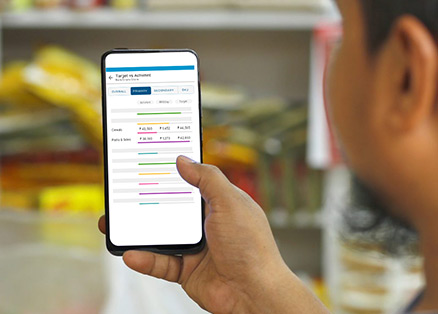Quite often one can find senior sales leaders spending significant business time trying to answer questions such as:
- Are we spending enough time at each store to understand and analyze customer behaviour patterns toward our products?
- Is there a possibility of generating additional business from each retailer through effective merchandise display and retail schemes?
- Are we able to judiciously apportion our time and money amongst our retailers to improve their efficiency levels and current business volumes?
Logistical analysis and customer insights reflect that effective Sales Territory Management can significantly reduce travel time and operational costs while improving the quality of meetings with important customers.
Sales Territory Management is a strategic approach that aims to evenly spread the workload for sales teams to engage their skills more competently. Within the context of FMCG sales and distribution management, a Beat Plan, also referred to as a Permanent Journey Plan (PJP), is an important instrument for field sales professionals to manage their field visits weekly, fortnightly, or monthly. It is a vital route-plan document created by the sales team to avoid the multiple challenges they face while planning their sales cycle every month.
How Do Retail Businesses Categorize PJPs?
FMCG Retail businesses categorize PJP (s) under effective sales territory management. Through a clear definition of territories, sales teams can considerably prevent area overlap between multiple sales executives and enhance productivity by reducing confusion, wastage of time, and money.
Since sales territories for each field representative are clearly demarcated, they do not compete against each other for the same accounts. Thus, in order to prepare a foolproof field force schedule, various factors such as distributor work hours, sale seasonality, fixed appointments, and working hours of the field force are taken into account. Therefore, a lot of time and thought must be invested in building a PJP – Sales Territory Management document.
Importance of effective territory management
The ultimate objective of demarcating areas is to efficiently allocate resources and maximize sales revenues. Poorly divided territories can often lead to a sub-optimal field activity, lost opportunities and demotivated field staff. Here’s why it is important to create balanced territories across sales representatives:
- A balanced and well thought through Sales Territory Management fosters better customer relationships. Hence, it aims to expand market coverage and provide enhanced customer service.
- It raises the possibility of identifying good-quality leads and accomplishing sales goals.
- Motivates the sales forces and pushes them to deliver better performance and efficiency. In addition, it aids in effective evaluation that duly rewards and retains high performing sales representatives.
- From the management perspective, sales territory management leads to enhanced control and better cost allocation.
Giving your sales team a structured Sales Territory Management plan is one thing, but how do you make sure that every member of your team follows it in the field?
How to ensure that PJPs are being followed?
Technology can help in more ways than one. A sales force automation solution or a sales tracking software or secondary sales software typically offers pre-defined PJPs or Beats that the on-ground salesman can choose from, so that he as well as his manager gets visibility on which outlets he will be covering that day. Automated, optimized beats help brands improve their outlet reach, boost their average drop size as well as increase sales productivity.
With a standout offering from FieldAssist called Beat-o-Meter, brands hike their efficiency up a couple of notches and maximize their outlet potential! Based on the last 3 months of order history, all outlets in the Beat-o-meter are color-coded into Active, Dormant, To-be-dormant and Inactive and Never Visited outlets. Via the Analytics app, managers can track the outlet status in real-time and accordingly guide their sales team.
By using Beat-o-Meter, one of our customers converted 30% of the Never Visited outlets into active outlets and 40% of No-Order outlets into Active Outlets. Imagine the kind of impact this would have had on their revenue!
One of the most critical aspects of on-ground sales operations is beat planning, and if you’ve got your sales territories optimized, that’s half the battle won! Sales automation can help on-ground teams extract maximum business potential from their territories. Is your team there yet?
About Post Author
Nikhil Aggarwal
Driven by his passion for growth through automation, Nikhil takes pride in embarking his clients through a transformational journey and helps them be a more resilient, agile, and future-ready brand.
















